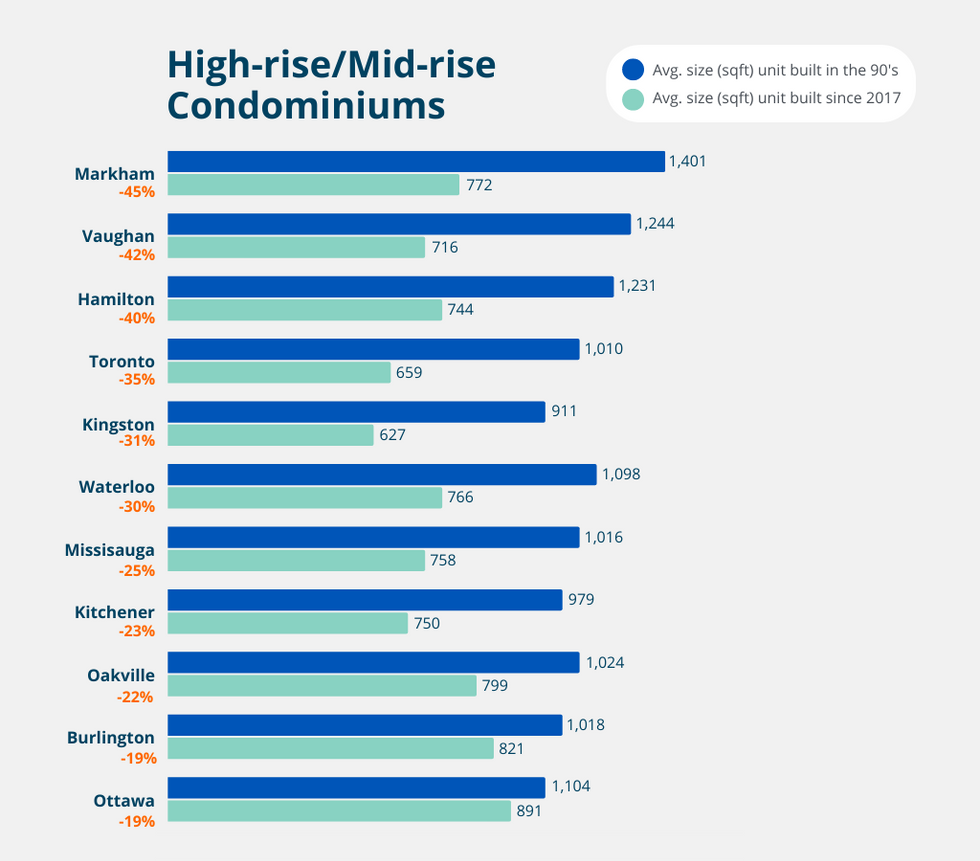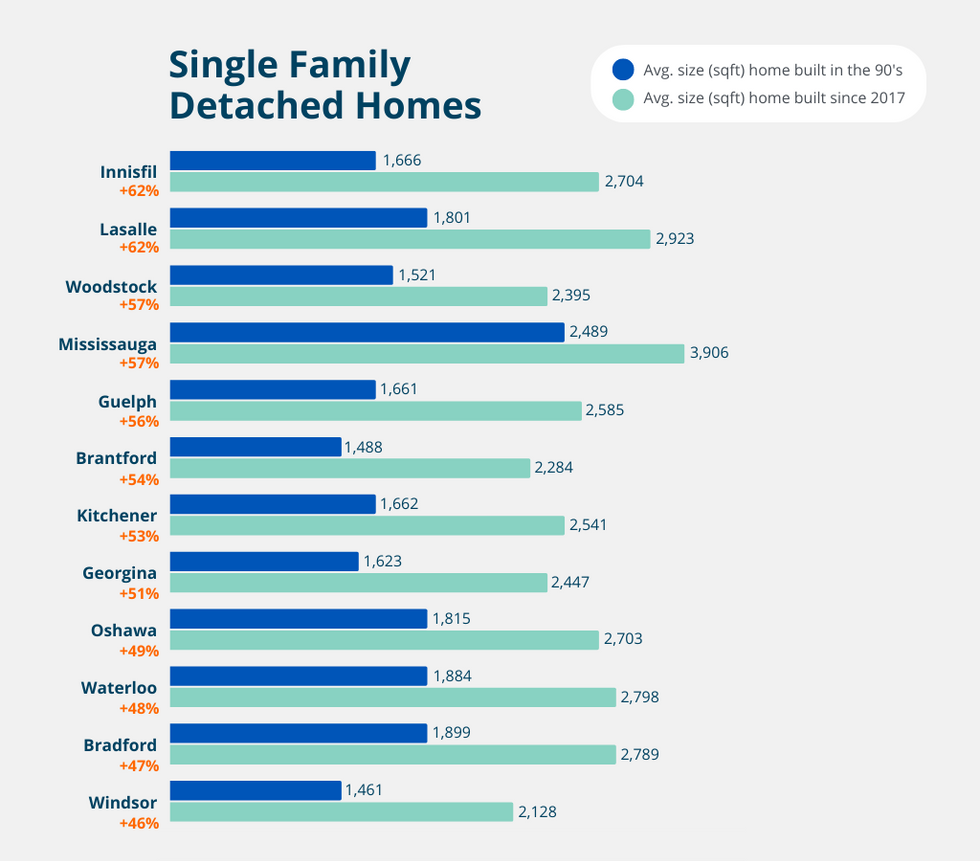As a sign of the times, Ontario’s condos are getting (even) smaller, while detached homes are getting larger.
According to the Municipal Property Assessment Corporation (MPAC), condominiums are 35% smaller on average than they were 25 years ago, while the average detached home is 25% larger. MPAC tracks property data across the province and says it’s watching to see if this decades-long pattern continues.
Back in the mid-1990s, the average condo in Ontario peaked at approximately 1,100 sq. ft. Now, the most recent MPAC data shows that the average condo today is about 700 sq. ft.
“As land values increase, we see more units on a single property, which means many of those individual units are smaller,” says Greg Martino, MPAC Vice-President and Chief Valuation and Standards Officer. “Because condos are traditionally a major entry point for first-time home buyers and investors, the market for the smaller units has remained quite strong."
According to MPAC, a similar trend toward smaller units is also evident in the townhouse market, with stacked townhouses -- multiple units constructed vertically on a single lot -- being built instead of traditional row townhouses.
Currently, amongst Ontario’s major urban centres, the average condo size in Toronto is 850 sq. ft -- the smallest in Ontario (a figure that's likely not surprising to Toronto residents). Windsor is next with an average of 854 sq.ft, followed by Kitchener (884 sq. ft.) Richmond Hill (892 sq. ft), and Hamilton (907 sq. ft). For those seeking more living space, Barrie, Burlington, and Oakville are all municipalities with some of the largest average condominium sizes, at more than 1,000 sq. ft.
When it comes to single-family homes, in markets where land is relatively affordable, larger family detached homes are being developed. For example, single-family detached homes were approximately 2,000 sq. ft in the mid-90s and today a typical single-family home is around 2,500 sq. ft.
“These are long-standing trends that will likely continue,” Martino says. “It will be interesting to see whether the change in consumer preferences and behaviours over the last couple of years, coupled with recent economic drivers, like inflation and rising interest rates, will alter the pattern,” he continued.
For those who could afford it, a re-evaluation of living spaces during the thick of the COVID-19 pandemic resulted in a craving for more living space and subsequent moves to larger homes. But even before things like home offices became essential for many, home preferences have shifted from the previous generation. Gone are the days when one family shares a single bathroom in a house, or when a tiny kitchen could adequately serve a busy household -- back before wide open-concept living and sprawling kitchen islands became a widespread reality. So, it's safe to assume that the trend for larger homes will stick around.
On the condo front, micro-condos gained quick traction in the past decade. While they've been both celebrated and criticized, the reality is -- especially in cities like Toronto -- that there will be a market for small spaces, as desperate homebuyers take what they can get in order to enter the increasingly unattainable housing market.
So, does size matter? Well, it depends on who you ask -- those in the market for detached homes, or those hoping to simply score a slice of notoriously pricey markets in a climate of sky-high interest rates.























